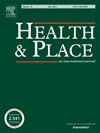Socioeconomic inequalities and ambient air pollution exposure in school-aged children living in an affluent society: an analysis on individual and aggregated data in Belgium
IF 3.8
2区 医学
Q1 PUBLIC, ENVIRONMENTAL & OCCUPATIONAL HEALTH
引用次数: 0
Abstract
Background
Individuals with lower socioeconomic status (SES) are at a higher risk of being exposed to adverse environmental factors. Children are more vulnerable to the harmful effects of air pollutants. Therefore, this study examined socioeconomic inequalities in air pollution exposure among children in Flanders, Belgium.
Methods
Data were used from 298 children (age range: 9–12 years), and from their parents who participated in the COGNition and Air pollution in Children study. Socioeconomic status was measured using highest parental education at the individual level and median income at the neighborhood (aggregated) level. Annual average outdoor concentrations of particulate matter with diameters <2.5 μm (PM2.5) and <10.0 μm (PM10), nitrogen dioxide (NO2), and black carbon (BC) in μg/m3 were estimated at the residential address. Mixed regression models were applied to examine the associations.
Results
Children from parents with a low education level were exposed to significantly higher levels of PM2.5, PM10, and BC compared to children from parents with a high education level. However, the associations were not significant when tested using regression models. Children who lived in areas with a lower median neighborhood income were exposed to significantly higher levels of air pollution; an interquartile range (IQR; €4505.00) decrease in income was associated with an increase in exposure to PM2.5 of 0.198 μg/m3, PM10 of 0.406 μg/m3, NO2 of 0.740 μg/m3, and BC of 0.063 μg/m3. Children of parents with a low/high education level had a higher exposure to PM2.5, PM10, NO2, and BC when living in a low income neighborhood. Exposure to all air pollutants was the highest for low parental education level and low neighborhood income. Conclusions: Low neighborhood income was significantly associated with higher levels of air pollution, while parental education level was not significantly associated. Children from parents with a low education and low income were exposed to the highest levels of air pollution.
生活在富裕社会的学龄儿童的社会经济不平等和环境空气污染暴露:对比利时个人和汇总数据的分析
社会经济地位低的个体暴露于不利环境因素的风险更高。儿童更容易受到空气污染物的有害影响。因此,本研究调查了比利时法兰德斯地区儿童暴露于空气污染中的社会经济不平等。方法数据来自298名儿童(年龄范围:9-12岁)及其父母,这些儿童参与了儿童认知与空气污染研究。社会经济地位是用个人水平的最高父母教育和社区(综合)水平的中位数收入来衡量的。估算了该居民点室外直径为2.5 μm颗粒物(PM2.5)和10.0 μm颗粒物(PM10)、二氧化氮(NO2)和黑碳(BC)的年平均浓度(μg/m3)。采用混合回归模型检验相关性。结果父母受教育程度低的儿童PM2.5、PM10和BC暴露水平明显高于父母受教育程度高的儿童。然而,当使用回归模型进行测试时,这些关联并不显著。生活在社区收入中位数较低地区的儿童暴露在明显较高水平的空气污染中;四分位间距;收入的减少与PM2.5 (0.198 μg/m3)、PM10 (0.406 μg/m3)、NO2 (0.740 μg/m3)和BC (0.063 μg/m3)的暴露增加有关。父母受教育程度低或高的孩子在低收入社区生活时,PM2.5、PM10、NO2和BC的暴露量更高。父母受教育程度低和邻里收入低的人群对所有空气污染物的暴露程度最高。结论:低邻里收入与较高的空气污染水平显著相关,而父母教育水平与较高的空气污染水平无显著相关。父母受教育程度低、收入低的孩子受到的空气污染程度最高。
本文章由计算机程序翻译,如有差异,请以英文原文为准。
求助全文
约1分钟内获得全文
求助全文
来源期刊

Health & Place
PUBLIC, ENVIRONMENTAL & OCCUPATIONAL HEALTH-
CiteScore
7.70
自引率
6.20%
发文量
176
审稿时长
29 days
期刊介绍:
he journal is an interdisciplinary journal dedicated to the study of all aspects of health and health care in which place or location matters.
 求助内容:
求助内容: 应助结果提醒方式:
应助结果提醒方式:


